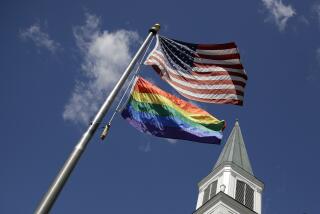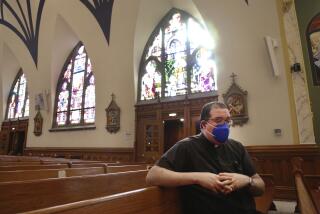New Immigrants Reverse Decline in Boston Churches
- Share via
BOSTON — Newly arrived immigrants have reversed half a century of decline in the number of churches in this city, according to the first comprehensive directory of Boston churches.
“The Boston Church Directory: 1989-1990,” published this summer by the Emmanuel Gospel Center, shows that a quarter of the 415 churches in Boston were formed within the last 20 years.
These new churches are more likely than their predecessors to speak a language other than English, to share quarters with another congregation and to include nonwhite members.
‘Not in the Phone Book’
“Half of these churches are not in the phone book,” said Rudy Mitchell, the directory’s editor. “Some may have as many as 500 members, and others have only 12.”
The vitality of new congregations was one of many surprises in the directory, a non-commercial publication compiled by researchers at the Emmanuel Gospel Center, an interdenominational agency that promotes church growth in Boston.
Members of Boston’s churches speak 25 languages in addition to English and represent 69 denominations. While 64% of city residents say they grew up Catholic, 78% of the city’s churches are Protestant. Forty percent are predominantly American black. Spanish- and Portuguese-speaking churches are among the fastest growing.
Social change since the mid-1930s had sapped the strength of both Catholic and mainline Protestant churches here, which lost 91,617 members between 1936 and 1986, according to figures compiled by the gospel center from denominational records.
Lower Number
Boston has fewer churches than other cities its size. Mitchell attributes the lower number of churches in part to the Catholic parish system, which in the United States has developed much larger congregations than its Protestant counterparts.
But a steep drop in mainline and Unitarian-Universalist congregations that began in the mid-1930s and accelerated in the 1950s and 1960s is also a large factor, he said.
“In my judgment, the growth of smaller churches shows vitality, but the growth is not anywhere near the scope of the loss experienced by the larger mainline and Catholic churches,” Mitchell said.
More to Read
Sign up for Essential California
The most important California stories and recommendations in your inbox every morning.
You may occasionally receive promotional content from the Los Angeles Times.













